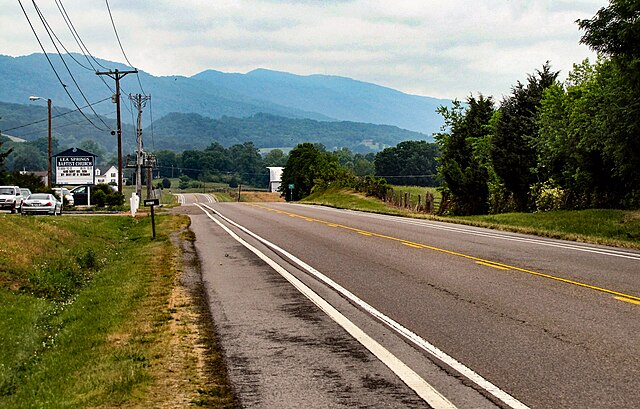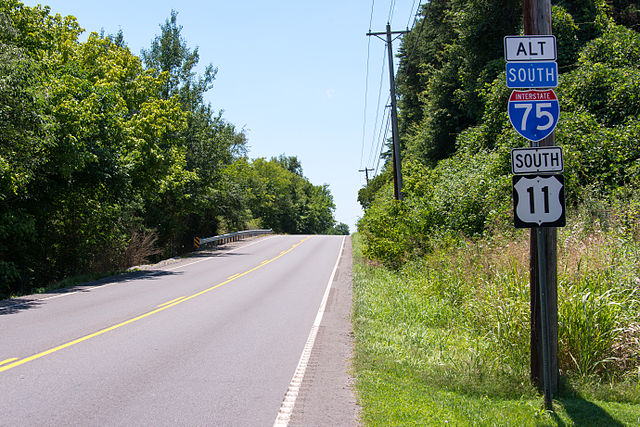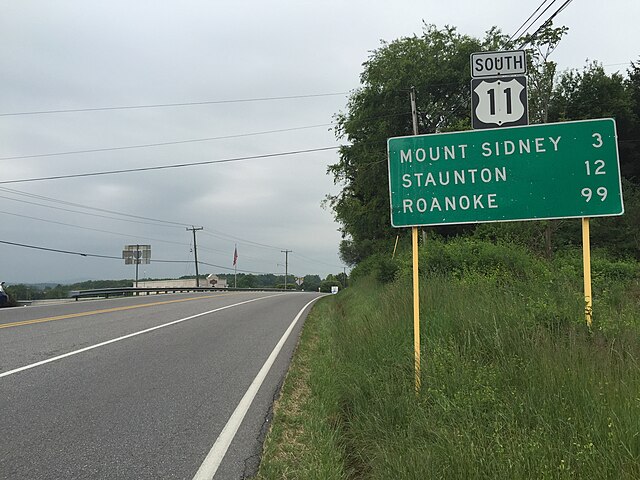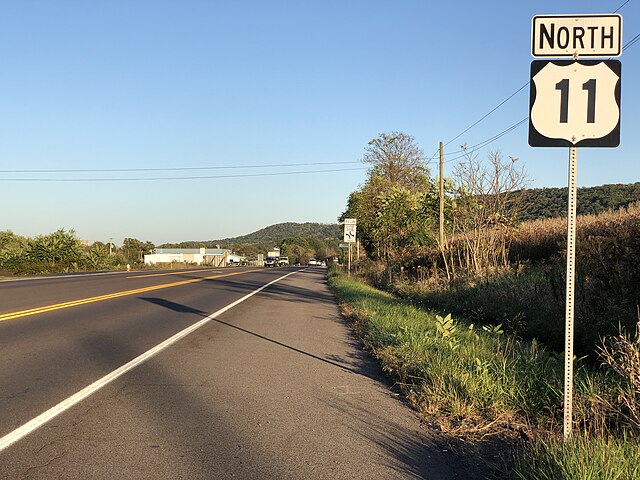U.S. Route 11W (US 11W) is the western branch of US 11 from the twin cities of Bristol, Tennessee/Bristol, Virginia, where US 11 splits into US 11E and US 11W, to Knoxville, Tennessee, where the two highways rejoin. The highway serves the Appalachia region's Ridge-and-Valley section of East Tennessee, bounded by the Clinch Mountain ridge to the north and the Holston River to the south. US 11W from Bristol to Bean Station and Blaine to Knoxville are designated as part of the National Highway System.
Two-lane US 11W looking northeast near Lea Springs; Joppa Mountain, a peak on the Clinch Mountain ridge rises in the distance.
US 11W at the signalized intersection of SR 92 in downtown Rutledge.
US 11W near its southern concurrency terminus with US 25E in Bean Station.
Aftermath of 1972 bus–truck collision in Bean Station on US 11W
U.S. Route 11 or U.S. Highway 11 (US 11) is a major north–south United States Numbered Highway extending 1,645 miles (2,647 km) across the eastern U.S. The southern terminus of the route is at US 90 in Bayou Sauvage National Wildlife Refuge in eastern New Orleans, Louisiana. The northern terminus is at the Rouses Point–Lacolle 223 Border Crossing in Rouses Point, New York. The route continues across the border into Canada as Route 223. US 11, created in 1926, maintains most of its original route. The route north of Knoxville, Tennessee, follows a route similar to Interstate 81 (I-81). While it is signed as a north–south route, it physically travels in a northeast–southwest direction.
Southern terminus at US 90 in New Orleans, Louisiana
US 11 along Lee Highway, south of Lenoir City, Tennessee
View south along US 11 near SR 256 in Weyers Cave, Augusta County, Virginia
US 11 northbound in Danville, Pennsylvania








